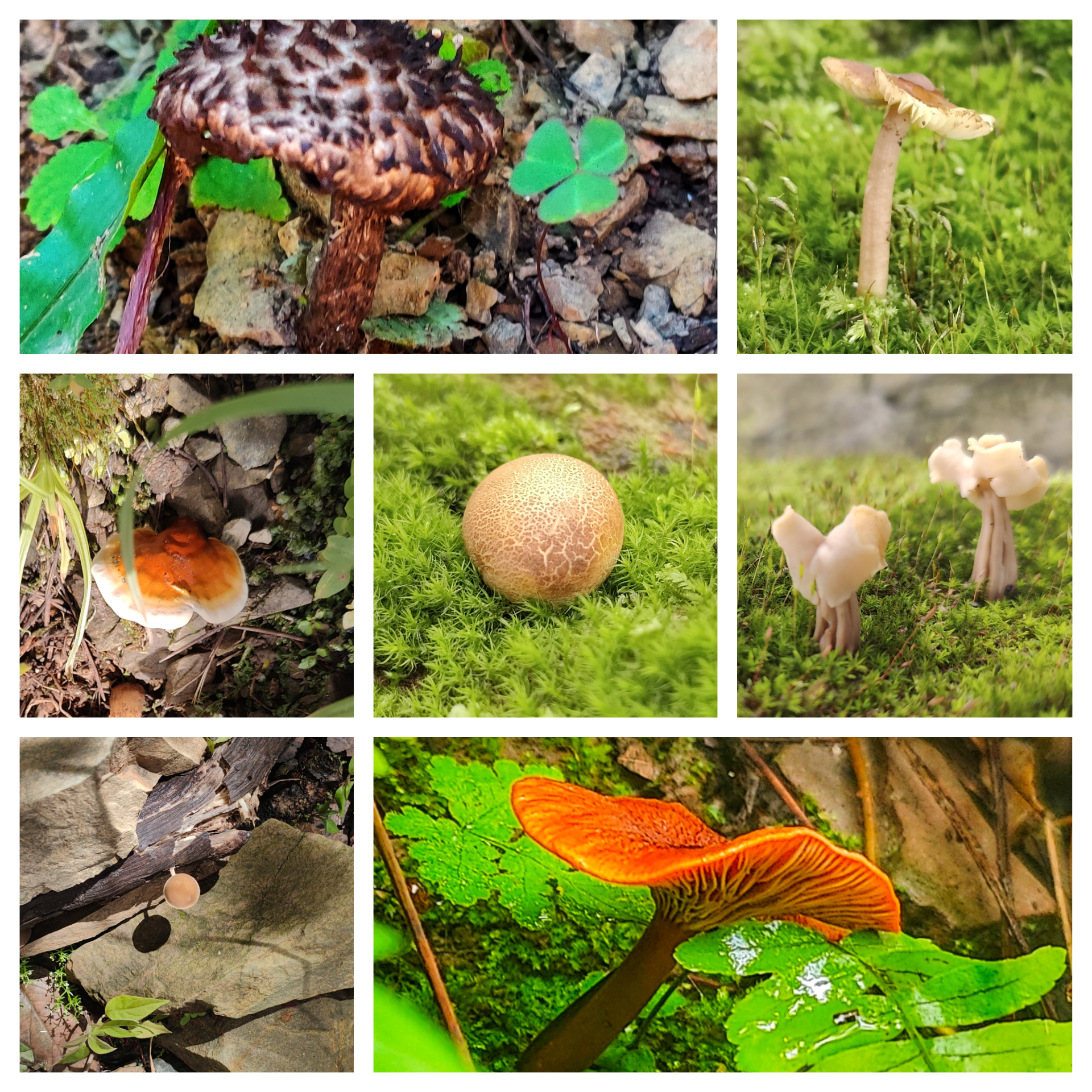Autumn season has arrived on the hillside of Landour, Mussoorie as the ferns have started to turn yellowish brown. But the forest floor is still under the spell of monsoon magic as diverse mushrooms are still springing up through the forest floors. Everyday I come across these mushrooms of different, shapes, sizes and colours. Some mushrooms are edible, while some are poisonous, few are symbiotic or mycorrhizal too. Some love to grow on the rotten tree stumps, some prefer the rhizosphere of particular tree species only. Few like the rocky crevasses and few pop out from the mosses. It’s fascinating to observe them grow each day. The forests in the hillside consist mainly of Oak, Rhododendrons and intermittent Deodar and Pine. These mushrooms are sometimes mycorrhizal which are also an important component of forest ecology. They form wide networks in the rhizosphere of the forest creating a network for communication. This year the hillside is experiencing extended rainy days which is often an usual seasonal variation. The moisture and the warm humid temperature speeds up the decomposition process which is favorable for the mushrooms to flourish. I tried to capture these mushrooms and also attempted to identify them. I came across these round mushrooms over the moss covered forest floor, beneath the Ilex tree. They are called as Earth ball mushrooms (Scleroderma sp.). These are one type of poisonous mushrooms. They like to grow in acidic soils. This fungus was first described in scientific literature by Christian Hendrik Persoon in 1801. (Persoon’s Synopsis Methodica Fungorum, published in 1801, marked the starting point for taxonomy of gasteromycete fungi.) While walking under the Oak trees, I came across these interesting whitish mushrooms which were growing scattered in one moss covered slope. Helvella crispa, an edible mushroom is also known as the White saddle, Elfin saddle or Common helvel. The mushroom can be identified by its irregular wafer like whitish cap, fluted stem which is elastic and fuzzy under surface. Literature says that Helvella crispa is edible but of poor quality. I was startled by the view of this black mushroom growing on the forest slope near Rhododendron trees. At first it gave me the impression of a dead insect. This is Helvella lacunosa also known as the slate grey saddle or elfin saddle. This mushroom is considered edible by some although there are reports about the toxicity of this mushroom often leading to gastrointestinal disorders. Looks like an oyster shell, this reddish brown mushroom is a mushroom belonging to the Ganoderma genus. Ganodermas are well known for their medicinal properties. However, I am not sure whether the Ganoderma mushroom in the following picture has medicinal properties or not. The following mushroom is also known as Old man of the woods. One can easily spot this mushroom due to its typing form. The old man of the woods (Strobilomyces sp.) is a decent edible mushroom with a very striking appearance that makes it difficult to forget or mistake. I came across this mushroom for the first time naturally growing on the Oak forest floor. The following fungi looks like an Hygrocybe (gilled fungi) although I am not sure. The following fungi looks like a candy cap mushroom, I am not sure. Found this infected Polyporus mushroom growing out rotten tree stump of Chir Pine tree. The mushroom in the above picture belongs to the Mycena genus It is a large genus of small saprotrophic mushrooms that are rarely more than a few centimeters in width. They are characterized by a white spore print, a small conical or bell-shaped cap, and a thin fragile stem. Most are gray or brown. Besides the above mentioned mushrooms I also came across various Boletes and Old man of the forest too. Thank you Like, share and follow. ? https://www.facebook.com/Dr.ChandrimaDebi/ https://www.instagram.com/debichandrima/ https://www.sumanmitra.com/ ©All images and content are subjected to copyright © 2022 chandrimadebi https://chandrimadebi.com


